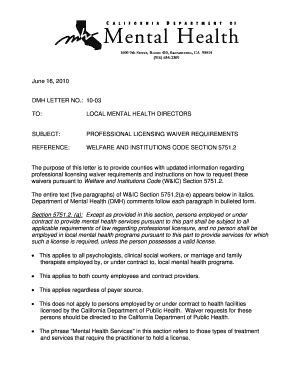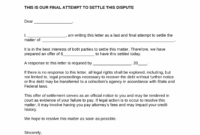Navigating the various demands of modern life often brings forth unexpected requirements, and one such document gaining increasing relevance is the mental health clearance letter. This formal document, typically issued by a licensed mental health professional, serves to verify an individual’s current psychological fitness or stability for specific purposes. Whether it is for employment in a sensitive role, enrollment in an educational program abroad, legal proceedings, or even travel to certain destinations, its purpose is to provide assurance regarding an individual’s mental well-being and capacity.
The process of obtaining and presenting such a letter can feel daunting, given the sensitive nature of mental health information. It requires not only a thorough understanding of what the letter entails but also how it should be structured to be both professional and effective. This guide aims to demystify the process, offering clarity and practical advice on understanding, preparing, and utilizing a robust mental health clearance letter template.
Understanding the Purpose and Importance of a Mental Health Clearance Letter
A mental health clearance letter is more than just a piece of paper; it is a critical document that can open doors to opportunities or fulfill necessary legal and administrative requirements. The need for such a letter arises in diverse scenarios. Employers in high-responsibility fields, like aviation or law enforcement, might request it to ensure candidates possess the mental fortitude required for the job. Educational institutions, especially for programs involving high stress or international travel, may seek assurance of a student’s mental readiness. Furthermore, in legal contexts, such as child custody disputes or competency hearings, these letters provide essential insights into an individual’s psychological state.
The importance of this letter extends beyond mere compliance; it offers reassurance to the requesting party that the individual can meet specific demands, manage responsibilities, or is not a risk to themselves or others in a particular environment. It also serves as an advocacy tool for the individual, affirming their current state of mental health and capacity, thereby helping to overcome potential biases or misunderstandings. For the professional issuing it, it is a statement of their clinical judgment, based on a comprehensive assessment.
These letters are exclusively issued by qualified mental health professionals, including psychiatrists, psychologists, licensed clinical social workers, or licensed professional counselors. Their expertise is crucial in evaluating an individual’s mental state, making an informed assessment, and then articulating that assessment in a clear, professional document. Their ethical responsibility is paramount, ensuring that the letter accurately reflects their professional opinion while respecting client confidentiality.

Given the varied contexts and the critical nature of these documents, having a structured approach is invaluable. A reliable mental health clearance letter template provides a foundational framework, ensuring that all necessary information is consistently included, the language is appropriate, and the letter adheres to professional standards. It simplifies the drafting process for mental health practitioners and ensures that the client receives a document that meets the specific requirements of the requesting entity.
Key Components of an Effective Clearance Letter
- Professional letterhead including the practitioner’s name, credentials, and contact information.
- The full name and date of birth of the patient.
- The date the letter is issued.
- The name and affiliation of the recipient or requesting party.
- A clear, concise statement of the letter’s purpose.
- A statement affirming the individual’s mental health status or capacity relevant to the request.
- A declaration that the letter is provided with the patient’s informed consent.
- The professional’s signature, printed name, and professional license number.
It is crucial to remember that patient confidentiality and explicit written consent are cornerstones of this process. Without the patient’s permission, a mental health professional cannot release their information, regardless of the request.
Crafting Your Mental Health Clearance Letter: A Step-by-Step Guide
When it comes to drafting a mental health clearance letter, precision and professionalism are key. While a robust mental health clearance letter template provides an excellent starting point, each letter must be carefully tailored to the individual and the specific requirements of the requesting party. The process begins long before the actual writing, with a thorough clinical assessment of the individual’s current mental state as it pertains to the reason for the request.
The mental health professional must first secure explicit, written consent from the client to release their protected health information. This consent form should detail exactly what information will be shared and with whom. Without this critical step, ethical and legal boundaries would be crossed. It is also important for the professional to understand the specific context and requirements of the requesting entity to ensure the letter addresses all their concerns adequately.
The content of the letter itself should be clear, concise, and focused. Avoid overly technical jargon where possible, or explain it plainly if its inclusion is necessary. The language should be professional and objective, focusing on current functional abilities and mental health status rather than a detailed history of diagnoses unless directly relevant to the clearance and explicitly consented to. The aim is to affirm the individual’s fitness for the specified purpose, based on clinical assessment.
Accuracy and honesty are paramount. The professional’s reputation and license depend on the integrity of the document. The letter must faithfully represent the clinician’s professional judgment and findings. Misrepresentation or omission of crucial information can have serious consequences, not only for the professional but also for the client and the requesting party.
When structuring the letter, think of it as a formal communication. It should begin with a professional letterhead. Clearly state the date and to whom the letter is addressed. Identify the patient by their full name and date of birth. The body of the letter should then clearly articulate its purpose, followed by the professional’s assessment and a statement regarding the individual’s mental health status relevant to the request. It is often helpful to conclude with an offer to provide further clarification, always contingent upon the client’s renewed consent.
A final review is essential. Proofread for any grammatical errors or typos. Double-check that all required information, including the professional’s signature and license number, is present and correct. Ensure the letter directly addresses the criteria set forth by the requesting party, leaving no ambiguity. A well-crafted letter can significantly ease processes for the individual it concerns, while also upholding the highest standards of professional practice.
The careful preparation and presentation of a mental health clearance letter are crucial steps in many life situations. It serves as a testament to an individual’s current well-being, providing necessary assurances for various personal, professional, and legal endeavors. The collaborative effort between the individual and their mental health professional ensures that this sensitive document accurately reflects their current state and fulfills its intended purpose effectively.
Ultimately, such letters are powerful tools that bridge the gap between personal well-being and external requirements. They underscore the importance of mental health in all aspects of life and facilitate smoother transitions or compliance where such verification is needed. With careful attention to detail and professional integrity, these letters play a significant role in supporting individuals as they navigate their unique paths.

